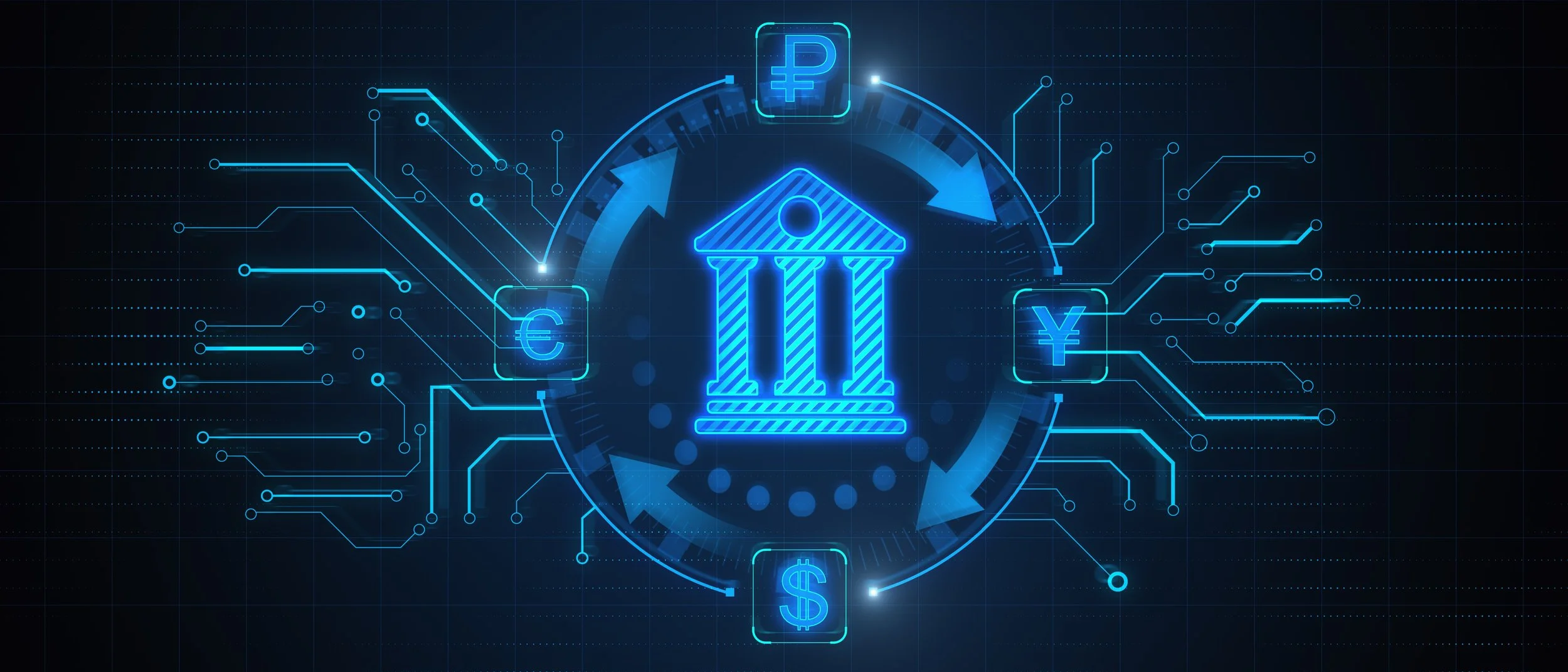
TechNews
Latest updates and insights on tech.
AI and Blockchain Banking
This article explores how AI, blockchain, and quantum technology are transforming the fintech ecosystem. From smarter transactions to decentralized finance and next-gen encryption, these innovations are shaping a more intelligent, secure, and future-ready financial world.
Cybersecurity 2025: AI vs AI
This article explores the escalating AI-driven cyber arms race unfolding in 2025. It dives into how both attackers and defenders are using artificial intelligence to outmaneuver each other in real-time digital warfare. From autonomous malware to adversarial learning and AI-powered defense systems, the piece outlines the technologies, risks, and ethical questions driving the next phase of cybersecurity innovation.
Securing Critical IoT Systems
As IoT devices become central to the operation of energy grids, hospitals, transit systems, and other vital services, ensuring their security is critical. This article outlines the risks, regulations, and best practices surrounding IoT security in critical infrastructure in 2025. From cyberattacks to outdated systems, it explores how organizations can defend their connected environments with proactive design, regulatory compliance, and advanced threat detection.
AI for Cyber Threats
As cyber threats continue to grow in scale and sophistication, traditional security measures alone are no longer sufficient. Ethical hacking—also known as penetration testing—is becoming a critical tool for identifying and addressing system vulnerabilities before malicious actors exploit them. By simulating real-world attacks, ethical hackers help strengthen defenses, improve incident response strategies, and meet regulatory requirements. In 2025, as technologies like AI and IoT expand the threat surface, ethical hacking is poised to become a core element of every organization's cybersecurity strategy.
2025 Cyber Tactics
In the evolving digital landscape of 2025, cyber threats have become increasingly sophisticated, rendering traditional security measures insufficient. Ethical hacking, or penetration testing, has emerged as a crucial strategy to identify and address vulnerabilities before malicious actors can exploit them. By simulating real-world attacks, ethical hackers help organizations strengthen their defenses and protect critical digital assets. As cyberattacks grow in scale and complexity, integrating ethical hacking into regular cybersecurity protocols has become a vital component of resilient digital infrastructure.
Zero Trust Security
As cyber threats become more sophisticated, traditional perimeter-based security models are proving inadequate. Zero Trust Security offers a proactive approach by operating on the principle of "never trust, always verify." This model ensures that no user or system, whether inside or outside the organization, is trusted by default. Key components include robust identity and access management, least-privilege access, micro-segmentation, and continuous monitoring. By implementing Zero Trust principles, organizations can significantly reduce the risk of data breaches, ensuring that access to sensitive information is tightly controlled and continuously verified. This approach not only enhances security but also aligns with modern IT environments that include cloud services and remote workforces.
Cyber Threat Defense
As cyber threats become more sophisticated and relentless, businesses must move beyond traditional security methods. This article explores the most pressing emerging threats—such as ransomware, phishing, and insider attacks—and offers practical strategies to proactively defend digital assets. From AI-powered threat detection to securing remote infrastructure, organizations can build resilience by adopting comprehensive cybersecurity frameworks that prioritize prevention, rapid response, and continuous improvement.
Securing the AI Future
As artificial intelligence (AI) continues to revolutionize industries, it brings both powerful tools for defense and complex new threats. This article explores the dual role of AI in cybersecurity—enhancing threat detection and automation while also introducing novel vulnerabilities. From adversarial attacks on machine learning models to privacy concerns in data-driven systems, businesses and governments must adopt robust cybersecurity strategies. The piece also emphasizes ethical considerations, the need for secure autonomous systems, and the importance of building resilient frameworks to protect digital infrastructure in an AI-driven world.
Quantum Computing & Security
Quantum computing poses significant challenges to traditional cybersecurity measures, particularly encryption protocols, which rely on the complexity of mathematical problems to safeguard sensitive data. With quantum computers potentially solving these problems exponentially faster, encryption methods such as RSA and ECC may no longer be secure. Proactive strategies—such as transitioning to quantum-safe encryption and investing in research—are essential to protect data in the quantum era.
Smarter Data at Edge
Edge computing is transforming data processing by decentralizing computational tasks, reducing latency, and enhancing security. By processing data closer to its source, businesses can achieve faster, more efficient operations, particularly in IoT applications and real-time analytics. This article explores how edge computing is reshaping data processing, improving security, reducing cloud dependency, and enabling the integration of AI and machine learning at the edge. As industries embrace edge computing, it is becoming an essential component of digital transformation strategies.
Blockchain Security
As cyber threats escalate and data privacy concerns grow, blockchain technology is emerging as a powerful tool in the evolution of digital security. This article explores how blockchain’s decentralized and cryptographically secure architecture is mitigating vulnerabilities inherent in traditional systems. From encrypted data management and smart contracts to decentralized identity solutions, blockchain is redefining how sensitive information is protected. While challenges around scalability and regulatory compliance persist, the technology’s potential to enhance digital trust and transparency is reshaping the future of cybersecurity across industries.
Tech in Disaster Response
Cutting-edge technologies are reshaping disaster response by enhancing speed, accuracy, and coordination in crisis situations. This study focuses on innovations such as drones and Artificial Intelligence (AI), which are enabling faster assessments, more efficient search and rescue operations, and smarter resource allocation. While these tools bring significant advantages, their integration also presents challenges that must be addressed to fully realize their potential in saving lives and supporting recovery efforts.
Future Work Technologies
Remote work technologies are reshaping modern workplaces by enhancing communication, streamlining project management, and boosting productivity. This study examines the tools and platforms driving this transformation, highlighting how they enable seamless collaboration across distances. As technology continues to evolve, it plays a central role in redefining how teams operate and stay connected in a distributed world.
Emerging Cybersecurity Trends
Modern cyber defenses now integrate AI-driven threat hunting with blockchain-based data integrity systems, creating adaptive protection layers that enhance overall security. As IoT vulnerabilities multiply, these advanced systems prioritize real-time response capabilities—with 78% of enterprises now adopting some form of AI security tools, according to recent MITRE research.
Quantum Cryptography
Quantum cryptography leverages quantum mechanics to establish theoretically unhackable communication via Quantum Key Distribution (QKD). Unlike traditional encryption, QKD offers unconditional security by detecting any eavesdropping attempts. As research advances, this technology has the potential to redefine global data security standards in our increasingly vulnerable digital world.
Quantum Computing's Impact
Quantum computing is poised to redefine the boundaries of computation across multiple sectors. Its extraordinary processing power offers groundbreaking potential—from accelerating drug discovery to optimizing financial models and strengthening encryption. The technology heralds a new era of innovation in logistics, cybersecurity, and beyond.
UX and Cybersecurity
The intersection of user experience and cybersecurity presents new opportunities to build trust in digital spaces. This study takes a mixed-methods approach to examine current practices, user perceptions, and the challenges of aligning UX design with security measures. The findings highlight how thoughtful design can reduce cybersecurity risks and strengthen user confidence across digital platforms.
Quantum Cryptography: Secure Communication
The ever-growing reliance on digital communication necessitates robust security measures to protect sensitive information from unauthorized access. Traditional cryptography, based on complex mathematical algorithms, faces potential obsolescence due to advancements in computing power. Quantum cryptography emerges as a revolutionary approach, leveraging the unique properties of quantum mechanics to establish provably secure communication channels. This article explores the fundamental principles of quantum cryptography, focusing on the concept of quantum key distribution (QKD). We examine the advantages of QKD over traditional encryption methods and discuss various protocols for secure key exchange. We also address the current stage of development, challenges associated with implementing QKD in real-world applications, and future directions for this groundbreaking technology.














